A Dance that Relentlessly Challenges and Changes
An Interview with Hong Dance Company Director Hyejeon Hong and company members Kim Min Soo and Jang Han Nah
BY EMMALY WIEDERHOLT
Translated by Soo Jung Bae
Photos by Sanghoon Ok and courtesy Hyejeon Hong
한글로 인터뷰를 읽으시길 원하신다면 스크롤을 내려주세요.
Hyejeon Hong is a contemporary dance artist in Korea and the director/choreographer of Hong Dance Company, a performance company that works with dancers who have intellectual disabilities. Hyejeon and two of her dancers, Kim Min Soo and Jang Han Nah, share their experience creating Possible Dance 2022, an iterative dance performance and process based on improvisation, which they performed at the Korean International Accessible Dance Festival (KIADA) in November 2022.
This interview is part of a series of interviews with presenters and performers at KIADA 2022.
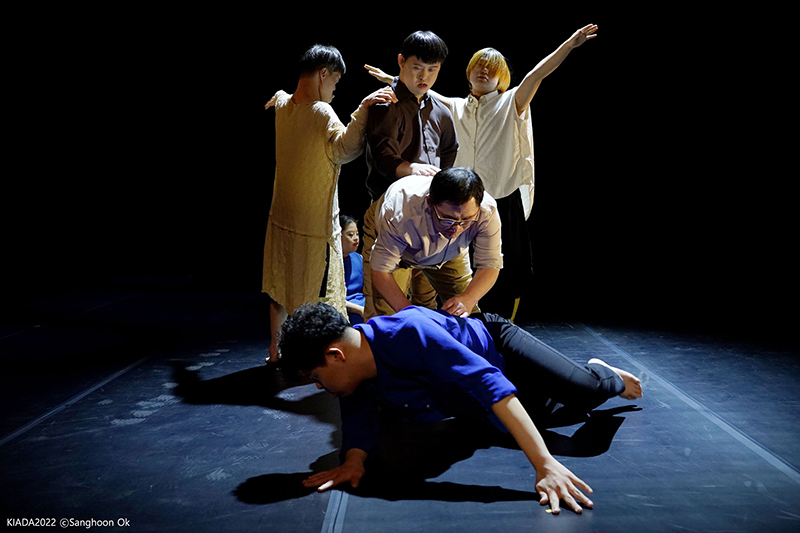
~~
Hyejeon, can you share a little about your dance history and what shaped who you are as an artist?
Hyejeon: After graduating from an arts high school, I majored in contemporary dance in college and choreography in graduate school. Among different roles that I have right now, the root art of my life is contemporary dance. When I was five years old, I watched the musical Peter Pan at Sejong Center. I saw actor Yoon Bok Hee, who played Peter Pan, flying in the hall. Seeing her flying, I immediately thought I wanted to do what she’s doing. Afterwards, when I hung out with my friends at home, I would ask them to be my audience and I would dance.
In middle school there were special activity classes and among those classes was a dance class. So I raised my hand. I didn’t know what dance was, but I just felt like I had to do it. In middle school, the dance teacher supported me. My mom was also a strong supporter, so I was able to go to Seoul Arts High School as a contemporary dance major. After graduating, I focused on contemporary dance. Ever since then, I have continued doing various educational activities and performances related to dance.
A French choreographer named Jerome Bel influenced my art. In the 2000s, I watched The Show Must Go On by Jerome Bel in Vienna. That was the first time I realized that anyone can dance, not just dancers. And I also learned what dance really is through bodies that are not trained. When I came back to Korea, I started doing community dance and projects with people who are not professional dancers. In 2013, through Jerome Bel’s piece Disabled Theater, I came to realize that the disabled can dance. And it made me question, “If everyone has the right to dance, then why have I not seen the disabled dance so far?” So I became a mediator who connects the disabled with dance. I was able to expand my work through Jerome Bel and he changed my ideas of dance. I am grateful for him, although he doesn’t know me. These experiences changed me as a choreographer and as an educator.
Hyejeon, how would you generally describe your choreography with Hong Dance Company to someone unfamiliar with it?
Hyejeon: All the dancers in Hong Dance Company have developmental disabilities. There are various ways Hong Dance Company finds movements. We sometimes find new movements while the choreographer (me) and the dancers are doing an improvisation. Sometimes we find new movements while the dancers express themselves spontaneously while listening to improvised instrumental play. That’s how scenes are made. Our dances are made organically, like an alive creature. We deny artificial controls and focus on free movements that are instinctive emotional expressions. Efforts to find dance like this show how happy it is to freely express oneself and choose one’s movement based on the dancers’ emotions and external inspirations.
There’s a will in the dance of Hong Dance Company dancers. Inside, there’s a willpower to express oneself, a freedom to choose a movement, and the belief that dance can be danced out. Possible Dance is the name of a piece, but at the same time it’s our present moment. It’s a movement that shows another possibility that creates stories into scenes, which are made within play-like promises that go beyond instinctive emotional expressions. Hong Dance Company’s dances are created like this. It’s organic, and it’s a dance that relentlessly challenges and changes.
Min Soo and Han Nah, how did you get into dance?
Min Soo: Since I was young, I liked dancing and music, so I would start and end my day with singing and dancing practice. I participated in a music club at school, and performed in school events like talent shows. After graduating, I didn’t know how to continue my work. Then, I participated in Hong Dance Company’s education program. Now as a member of Hong Dance Company, I am continuing my life with dance and music.
Han Nah: Since I was young, I was energetic and enjoyed dance and music. When I was in special education school, I was selected as a disabled dance company member. So I was able to participate in various dance performances like ballet. But after graduation when I became a grown up, there was no opportunity. So I would just watch videos and dance, or choreograph by myself. Then I participated in Hong Dance Company’s education program. Since then, I am getting a professional education and have been getting opportunities to develop my passion.
Hyejeon, how did you get involved with or introduced to KIADA?
Hyejeon: Hong Dance Company participated in the first KIADA that was held in 2016 with the name of Dancing Eunpeong. We took a two-year break in 2020 and 2021 and started participating again in 2022. When KIADA first started, the disability dance field was very weak in Korea, so choreographers who were in the field of disability dance were appointed to the KIADA committee and put a lot of effort into developing the ecosystem of disabled dance. I believe that KIADA’s sustainability is related to creating an ecosystem of disabled dance in Korea.
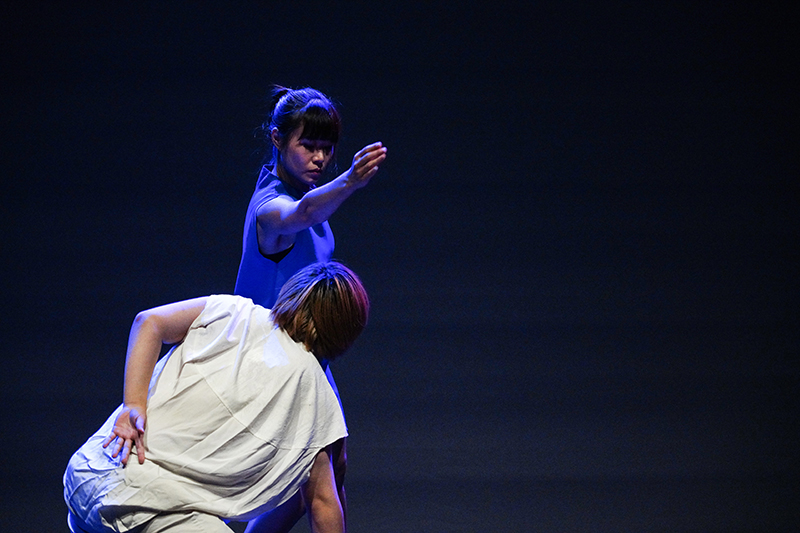
Hyejeon, can you share some information about Possible Dance 2022, the piece Hong Dance Company performed for KIADA 2022? What was your impetus behind the piece?
Hyejeon: Hong Dance Company continued community dance with friends from Eunpeong Rehabilitation Center from 2013 to 2016, as part of the Seoul Dance Festival, held by Seoul Culture Institution. Back then, Eunpeong Rehabilitation Center was a housing facility where male adults with intellectual disorders lived together. It was a community dance club to share happiness by enhancing self-esteem through dance. When I first met them, they liked dancing but they could only copy K-Pop dance. Every dance was possible, but I wanted them to dance where they express themselves. While I was trying different methods, I realized that they were changing by dancing together. It made me look forward to the future. They were not professionally educated in dance. It made me wonder what was out there. By working with Hong Dance Company, I was curious how far they could choose their own movements and express themselves through dancing. That’s how the name of this piece was made. Every year, the subject is different. But it’s a project that challenges how far our dance has come, and what is further possible. So as a symbol, I named it Possible Dance. Possible Dance 2022 was a piece where we checked our possibilities. We asked how far our movements came, how further we could move, and how much we could express what we wanted to express in movements. The Possible Dance series changes and evolves every year every time, depending on the characteristics of a place.
Hyejeon, what was the choreographic process creating the piece?
Hyejeon: In the solo part, I try to motivate the dancers by moving together. When a musician plays spontaneously, I encourage the dancers to choose the texture of movement according to the rhythm, so that the texture of movement becomes diverse and that it develops. I encourage the dancers to imagine by creating a story based on senses, so that the direction and energy of a movement diversifies. The improvisational play of the musician sometimes starts out by the musician but is also dependent on the condition and reactions of a dancer. Group dancing is continued by creating a story in a scene. There’s a game, a play. Rules are made so that space, weight, energy, and rhythm are used. Dancers believe that they are participating in a fun movement game (play), but through this process, scenes are made. And later we find out about these movements. So we enjoy creating a piece.
Min Soo and Han Nah, what was your experience performing Possible Dance 2022 at KIADA?
Min Soo: KIADA 2022, unlike other performances I was in, was an international performance. There were many great pieces but Professor Hong’s piece was an unforgettable performance. It was a great honor participating in this piece so KIADA 2022 will remain as a wonderful memory for a long time.
Han Nah: Performing in front of a large audience was a new experience, and getting reactions from the audience gave me a sense of accomplishment. It was a chance for me to develop my passion.
From your perspective, what opportunities are there for dancers with disabilities in your community?
Hyejeon: Friends who come to Hong Dance Company are those who want to become dancers. We provide education for those who want to become professional dancers and try to find their potential. There are no official educational institutions where you can get professional dance education in Korea if you have a developmental disability. Not everyone becomes professional artists by graduating from arts school. But when you realize you want to major in dance (while you are getting arts education), you cannot find schools to get a professional education if you have a disability. That’s the reality. Of course, you can learn dance in an arts school that non-disabled people go to, but it’s hard to gain learning opportunities. Becoming a member of Hong Dance Company means that you’re provided with professional dance education and, in addition, it means you’re provided with an opportunity to be a professional dancer.
Min Soo: After graduating from school, it was hard to find educational institutions where I can professionally sing and dance. But Hong Dance Company provides professional education. I believe there will be an opportunity to perform on stage if I keep practicing hard.
How would you like to grow or expand your work with Hong Dance Company in the future?
Hyejeon: I think about everyone’s right to dance, and everyone’s right to be happy through dance. Seeing our dancers dancing happily, I hope more people become happy together. I hope our dancers become more professional dancers and continue to perform. And I also hope some of our dancers become choreographers and teachers. Most of all, I hope our dancers are happy through dance.
Min Soo: I’m looking forward to Hong Dance Company’s performance in 2023. It’s my dream to perform more and I wish I could become an artist that performs worldwide.
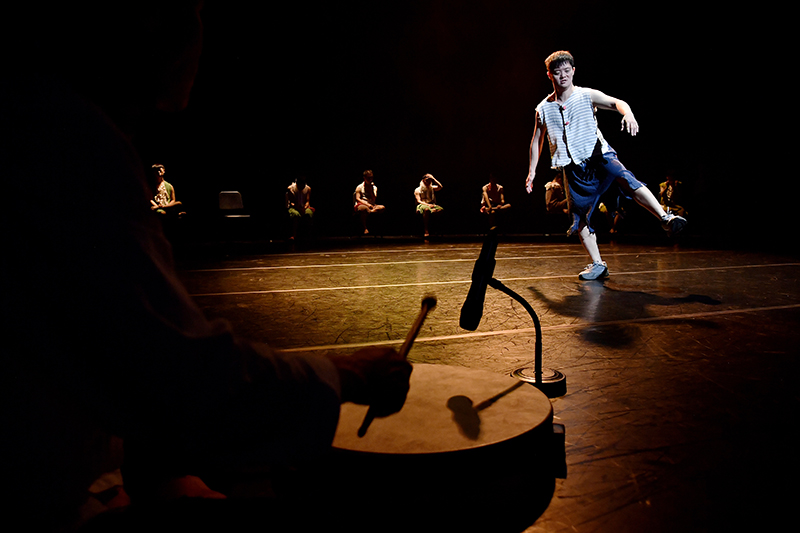
~~
끊임없이 도전하고 변화하는 춤
홍댄스 컴퍼니 감독 홍혜전 선생님, 김민수 무용수, 장한나 무용수와의 인터뷰
에말리 위더홀트(Emmaly Wiederholt) 작성
배수정 번역
홍혜전 안무가는 한국의 현대 무용수이자 홍댄스컴퍼니의 감독/ 안무가입니다. 홍댄스컴퍼니의 무용수들은 발달장애를 갖고 있습니다. 본 인터뷰에서는 홍혜전 선생님과 김민수 무용수, 장한나 무용수가 <가능한 춤 2022> 작업을 한 경험이 실려있습니다. <가능한 춤 2022>은 대한민국장애인국제무용제 2022(키아다, KIADA)에 올려진 공연으로, 즉흥과 반복적인 동작을 기반으로 한 공연을 선보였습니다.
본 인터뷰는 키아다 2022에서 공연을 한 무용수들과 안무가들의 인터뷰 모음집의 일부입니다.
~~
홍혜전 선생님, 과거에 어떤 무용을 해오셨는지, 어떻게 무용을 하게 되셨는지에 대한 경험을 나누어주실 수 있나요? 또, 예술가가 되는 것에 영향을 미쳤던 것이 있다면 무엇이었나요?
홍혜전 안무가: 예술고등학교와 대학에서 현대무용을 전공하였고, 대학원에서 안무법을 전공했습니다. 현재 저에게 주어진 여러 역할 가운데 삶의 근원이 되는 예술은 바로 현대무용입니다. 다섯 살 때 세종문화회관에서 뮤지컬 공연 <피터팬>을 보았어요. 그 당시 피터팬 역할을 맡았던 윤복희 배우가 공연장 안을 날아다니는 모습을 보고 ‘무조건 저걸 하고 싶다’는 생각을 했습니다. 그 후 저의 어릴 적 놀이는 집에서 친구들은 관객이고, 저는 춤추는 무용수가 되는 역할극 놀이를 좋아했던 기억이 납니다.
그러다가 중학교 때 특활반을 들어야 했는데 여러 반 중에 ‘무용반’이 있었습니다. 그래서 손을 들었죠. 사실 무용이 뭔지는 잘 몰랐지만 ‘난 저걸 무조건 해야 겠다’라는 마음뿐이었어요. 중학교 때 무용반 선생님께서 힘을 실어 주시고, 어머니도 든든한 후원자가 되어 현대무용을 전공으로 서울예술고등학교에 진학할 수 있었습니다. 학교를 졸업한 후 현대무용에 집중하는 삶을 이어 갔고, 무용과 관련된 다양한 공연과 교육 활동 등을 하며 지금껏 살고 있습니다.
저의 예술활동에 영향을 미쳤던 인물은 프랑스의 안무가 제롬 벨(Jerome Bel)입니다. 2000년대 비엔나에서 제롬 벨의 작품인 <Show Must Go On>을 보았어요. 그때 처음으로 트레이닝 되지 않은 몸을 통한 진정한 춤이 무엇인지, 그리고 무용수 뿐만 아니라 누구나 춤을 출 수 있다는 생각을 그제서야 하게 되었습니다. 그리고 한국에 돌아와 일반인과 함께 하는 춤, 커뮤니티댄스 작업을 하기 시작했어요. 그리고 2013년 ‘페스티벌 봄’을 통해 역시 제롬 벨의 작품인 <장애극장> 을 통해 저는 “장애인도 춤을 출 수 있구나, 결국 우리 모두는 춤을 출 권리가 있는데 그동안 나는 왜 장애인이 춤을 추는 모습을 본 적이 없었던 걸까? 라는 생각을 하게 되면서 장애인이 춤을 출 수 있도록 매개자의 역할 또한 하게 되었습니다. 결국 제롬 벨의 작품을 통해 저의 활동 영역을 확장하게 되었기 때문에 그는 저에게 춤과 대상에 대한 생각을 바꾼, 영향력을 끼친 고마운 사람입니다. 물론 그는 저를 모르지만 말이죠. 이러한 자연스러운 만남들이 안무가이자 교육자로 변화하게 하였습니다.
선생님과 홍댄스컴퍼니의 무용·안무에 대해 잘 모르는 사람들을 위해서 선생님의 무용을 알려주신다면, 대략 어떻게 설명해주실 수 있나요?
홍혜전 안무가: 홍댄스컴퍼니 무용수들은 모두 발달장애를 갖고 있습니다. 홍댄스컴퍼니가 움직임을 찾는 과정은 다양해요. 안무자인 저와 무용수가 함께 즉흥을 하다가 새로운 움직임을 발견하기도 하고, 무용수가 즉흥연주를 듣고 즉흥적으로 표현하다가 움직임을 새롭게 발견하기도 합니다. 그러면서 장면이 만들어지죠. 우리의 춤은 살아 있는 생명체의 유기적인 형태로 진행됩니다. 인위적인 절제를 거부하고 인간의 본능적인 감정표현에 충실한 자유로운 몸짓이죠. 춤을 발견하기 위한 이러한 노력을 통해, 무용수들이 자신의 감정과 외부로부터 받은 영감에 따라 스스로 움직임을 선택하고 자유롭게 표현하는 활동이 얼마나 스스로를 행복하게 만들 수 있는지 알려주고자 합니다.
홍댄스컴퍼니 무용수들의 춤은 춤을 출 수 있고 움직임을 선택할 수 있는 자유와 자신을 춤으로 표현하려는 의지가 담겨 있습니다. 홍댄스컴퍼니 무용수의 가능한 춤은 작품 제목이기도 하지만 우리의 현재이기도 합니다. 본능적인 감정표현을 넘어 놀이적 약속을 기억하고 그 안에서 만들어지는 이야기를 장면으로 만들어내는 또 다른 가능성을 보여주는 움직임입니다. 이렇게 창작되고 있는 홍댄스컴퍼니의 춤은 살아 있는 생명체의 유기적인 형태로써 끊임없이 도전하며 변화하고 있는 현재의 춤입니다.
김민수 무용수님, 장한나 무용수님, 어떻게 무용을 시작하게 되셨나요?
김민수 무용수: 어려서부터 춤과 노래를 좋아해 항상 춤과 노래연습으로 하루를 시작하고 마무리할 정도로 관심이 높았습니다. 그러다보니 학교에서도 음악동아리 활동을 하며 학교 대표로 학교행사나 학예회 발표 등 공연에 참여하였습니다. 학교를 졸업하고 어떻게 활동을 지속해야 하는지 모르던 중 홍댄스컴퍼니의 교육사업에 참여하게 되면서 현재 댄스컴퍼니에 소속되어 춤과 노래로 저의 삶을 이어나가고 있습니다.
장한나 무용수: 어렸을 때부터 흥이 많았으며 춤과 노래를 즐겼습니다. 특수학교 재학중에는 장애인무용단원으로 발탁되어 발레와 다양한 무용을 공연할 수 있었습니다. 그러나 졸업 후 성인이 된 후에는 마땅한 기회가 없어 혼자서 동영상을 보며 춤을 추거나 본인이 직접 안무를 구성하여 집에서 춤을 추던 중, 홍댄스컴퍼니에서 진행하는 교육 프로그램에 참석하게 되었습니다. 이후 이곳에서 전문적인 교육을 받으며 저의 열정을 더욱 키우고 향상시킬 기회를 얻어 활동하고 있습니다.
홍혜전 선생님, 키아다를 어떻게 소개받게 되었나요? 혹은 어떻게 키아다와 함께 하게 되었나요?
홍혜전 안무가: 홍댄스컴퍼니는 ‘춤추는 은평재활원’이라는 이름으로 2016년 제1회 KIADA부터 참가하다가 2020년과 2021년 2년동안 잠시 휴식기를 갖고 2022년에 다시 참가하였습니다. KIADA가 처음 공연되기 시작할 당시엔 한국 내 장애무용의 생태계가 아주 미비할 때였습니다. 그래서 장애무용활동을 하는 안무가들이 KIADA 운영위원으로 위촉되어 장애무용생태계를 발전시키기 위한 다양한 노력을 함께 했었습니다. 한국 장애무용 생태계 형성이 KIADA의 지속성과 관련이 된다고 생각했기 때문입니다.
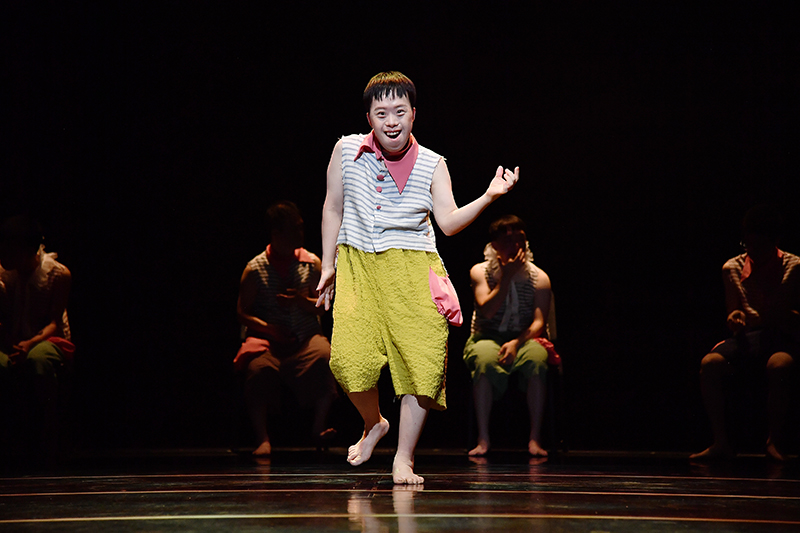
홍혜전 선생님, 올해 키아다에 올려진 선생님의 작품 <가능한 춤 2022>에 대해 조금 설명을 해주실 수 있나요? 작품의 탄생에 영향을 준 계기나 동기가 있을까요?
홍혜전 안무가: 홍댄스컴퍼니는 2013년부터 2016년까지 서울문화재단에서 진행한 ‘서울댄스페스티벌’의 일환으로 은평재활원 친구들과 함께 커뮤니티댄스를 진행하였습니다. 당시 은평재활원은 지적장애를 가진 남자 성인들이 함께 생활하는 거주시설로, 춤을 통해 자존감을 고취시키며 즐거움을 나누고자 모인 커뮤니티댄스 동아리였어요. 그들을 처음 만났을 땐 춤추는 것을 좋아했지만, K-팝 춤만을 그대로 따라만 할 줄 았았습니다. 모든 춤이 가능했지만 나는 이들이 자신을 표현할 줄 아는 춤을 추길 바랬죠. 여러 가지 방법을 시도하던 중 이들이 함께 춤을 추면서 변화되는 걸 발견하기 시작했습니다. 앞으로가 궁금해졌어요. 무용을 전문적으로 교육받지 않았던 이들이 지금, 홍댄스컴퍼니와의 작업을 통해 자신의 움직임을 스스로 선택하고 표현하는 춤이 어디까지 가능한지 말이죠. 그래서 만들어진 제목입니다. 매년 표현되는 주제는 다르지만 상징적으로 현재 우리들의 춤은 어디까지 왔는지, 어디까지 가능한지를 도전하는 작업이라 <가능한 춤>이라 짓게 되었습니다. 이번 공연이었던 <가능한 춤 2022>는 2022년 현재 우리의 움직임은 어디만큼 왔는지, 우리가 어디까지 움직일 수 있으며 우리가 표현하고자 하는 것을 움직임으로 표현할 수 있을지에 대한 질문을 가지고 그 가능성을 확인한 작품입니다. 가능한 춤 시리즈는 매년, 매회, 장소의 특성에 따라 변화되고 진화하고 있습니다.
홍혜전 선생님, 작품을 만드시는 과정이 어땠는지 설명해주실 수 있을까요?
홍혜전 안무가: 솔로는 연주자가 즉흥연주를 하면 그 리듬에 따라 무용수는 움직임의 질감을 스스로 선택하도록 하고, 그 움직임의 질감이 다양해질 수 있도록, 그리고 발전할 수 있도록 함께 움직이며 동기를 부여합니다. 또한 움직임의 방향성, 높낮이, 에너지 등이 다양해질 수 있도록 안무자의 감각에 의해 이야기를 만들어 상상할 수 있게 합니다. 또한 이때 연주자의 즉흥연주는 연주자로부터 발생되기도 하지만 무용수의 컨디션이나 반응에 따라 결정됩니다. 군무는 움직임이 존재하는 공간, 무게, 에너지, 리듬을 사용할 수 있도록 규칙을 부여한 놀이를 통해 장면 속 이야기를 만들어 가는 방식으로 진행되었어요. 무용수들은 재미있게 움직임 놀이에 참여하는 것처럼 느끼게 되지만 결국 이 과정을 통해 장면이 만들어짐을 나중에 발견하게 되기 때문에 즐겁게 작품을 만들고 있습니다.
김민수 무용수님, 장한나 무용수님, 키아다 2022에서 작품 <가능한 춤2022>에 참여하여 무대를 선보이신 경험은 어땠나요?
김민수 무용수: 2022키아다 공연은 그동안에 제가 활동한 공연과는 다른 세계적인 무대였습니다. 너무나 좋은 작품들이 많았지만 우리 작품인 홍교수님의 작품은 잊지 못할 멋진 공연이었습니다. 이 작품에 함께 참여할 수 있어서 큰 영광이어서 키아다2022는 오랫동안 좋은 기억으로 남을 것입니다.
장한나 무용수: 많은 관객이 있는 무대에서 공연을 한 새로운 경험이 되었고, 관객들로 부터의 호응은 무용수로써 성취감도 높아지고 더욱 열정을 키우게 되는 경험이었습니다.
선생님이 보시기에, 선생님이 속한 공동체에는 장애를 가진 무용수들에게 어떤 기회가 주어지나요?
홍혜전 안무가: 홍댄스컴퍼니에 찾아오는 친구들은 무용수가 되길 원하는 친구들입니다. 본인이 원한다면 전문무용수가 될 수 있도록 그 가능성을 찾아주고자 교육을 진행하죠. 우선 한국엔 아직까지 전문무용교육을 받을 수 있는 정식 교육기관이 없습니다. 물론 예술전문학교를 졸업했다고 해서 모두가 전문예술가가 되는 것은 아닙니다. 그러나 예술교육을 통해 무용을 전공하고 싶다는 생각이 들었을 때 비로소 전문적인 교육을 받을 수 있는 전문학교가 없다는게 지금의 현실입니다. 물론 비장애인들이 다니는 전문예술학교에서 무용을 배울 수 있지만 배움의 기회를 얻기가 쉽지 않습니다. 따라서 홍댄스컴퍼니의 단원이 된다는 것은 전문적인 무용교육을 받을 수 있는 기회가 제공될 뿐만 아니라 전문무용수로 활동할 수 있다는 기회가 주어집니다.
김민수 무용수: 학교를 졸업하면서 전문적으로 춤추고 노래할 수 있는 교육기관을 찾기가 어려웠습니다. 그러나 홍댄스컴퍼니에서는 전문적인 교육을 제공하고 있습니다. 이곳에서 열심히 연습하다보면 보다 많은 무대에서 공연할 수 있는 기회가 있을 것으로 생각합니다.
선생님께서는 미래에 선생님과 홍댄스컴퍼니의 작업을 어떻게 확장하고 또 성장시키고 싶으신가요?
누구나 춤출 수 있는 권리, 누구나 춤을 통해 행복해 질 수 있는 권리를 생각하게 됩니다. 그러면서 우리 무용수들이 즐겁게 춤추는 모습을 보며, 많은 사람들이 더불어 행복해지길 바랍니다. 우리 무용수들이 지금보다 더 전문적인 무용수가 되어 공연활동을 지속하길 희망하고, 우리 무용수 중에 안무가가, 그리고 교사가 나오길 희망합니다. 무엇보다 춤 활동을 통해 무용수들이 행복하길 희망합니다.
김민수 무용수: 홍댄스컴퍼니의 23년 공연계획을 기다리고 있습니다. 앞으로 더 많이 활동하면서 더 좋은 무대와 함께 세계로 진출하는 예술가가 되는 게 꿈입니다.
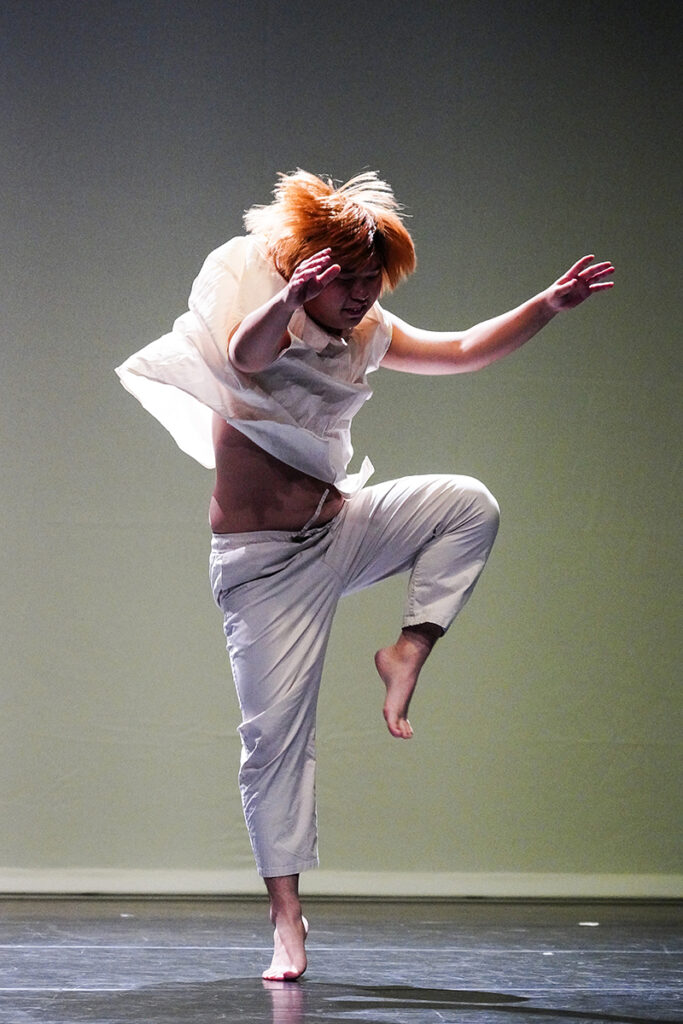
~~
